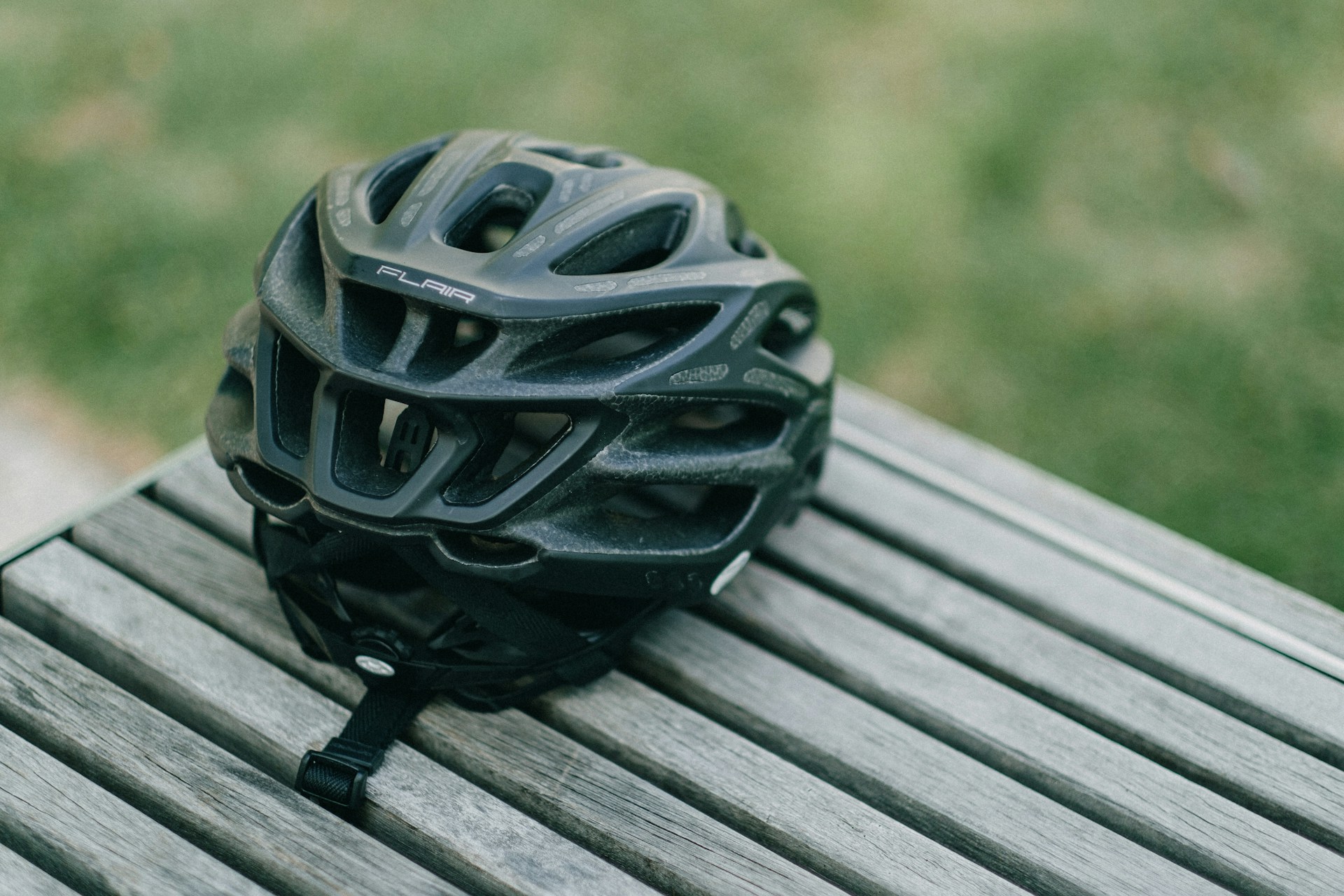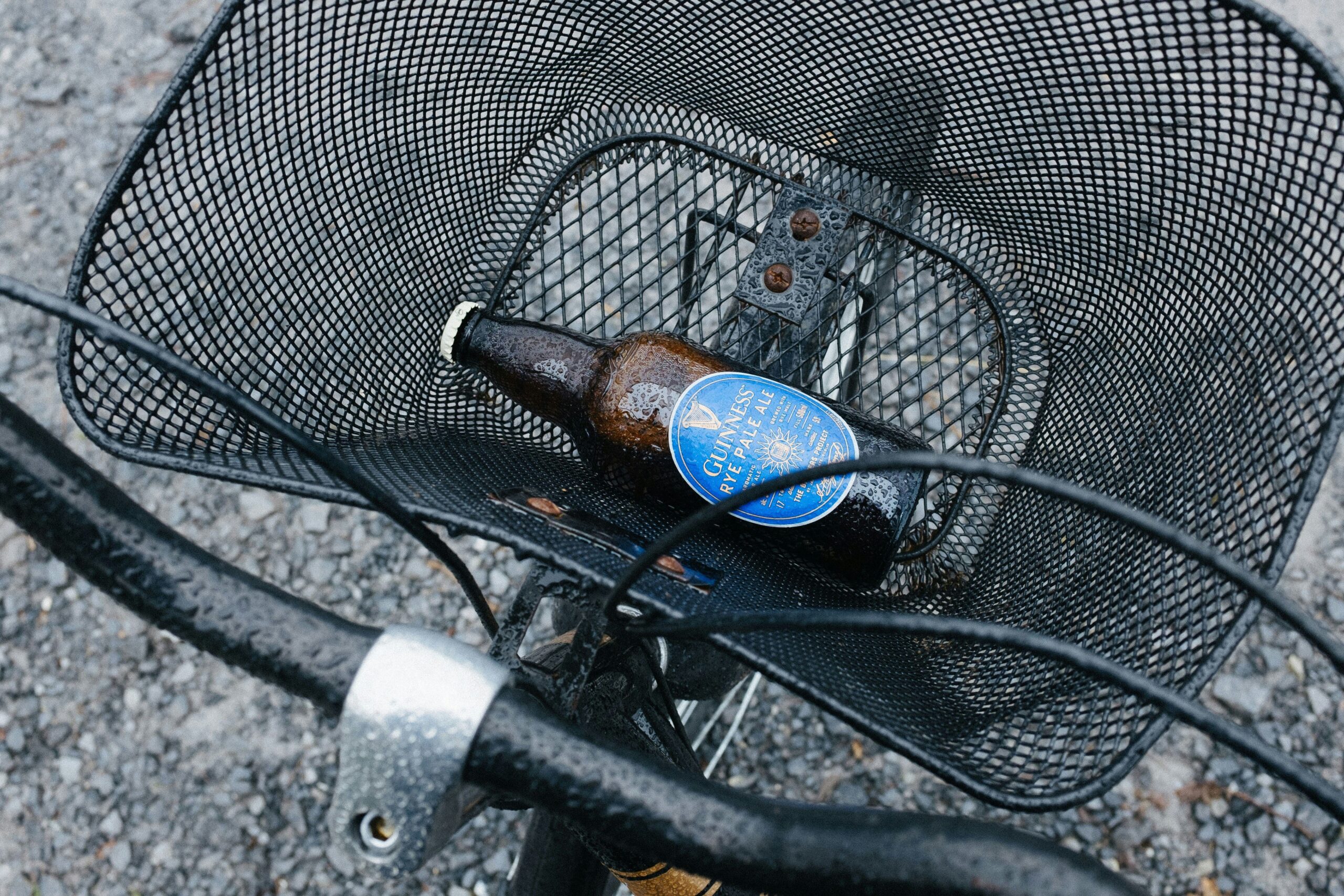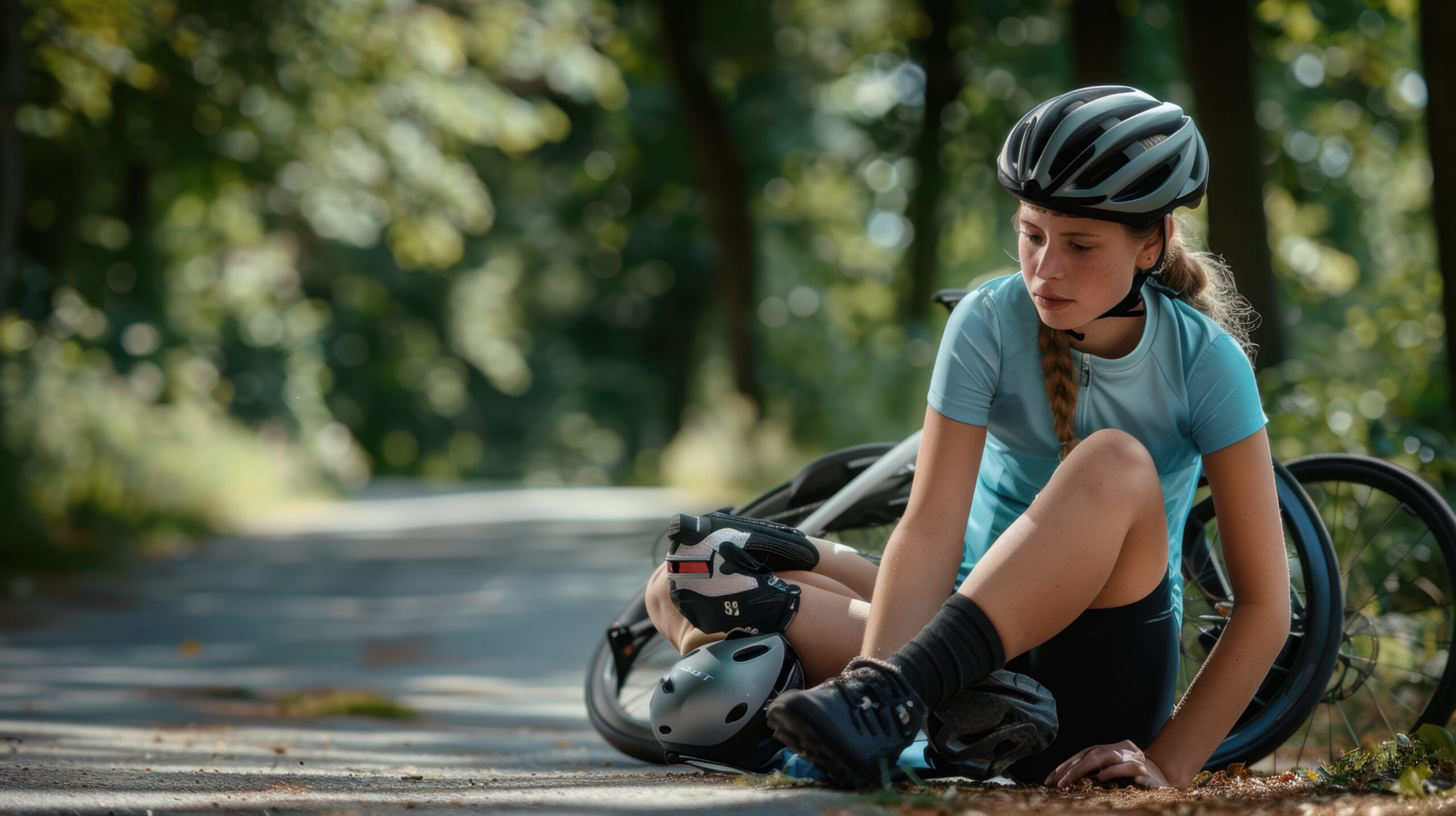A refreshing bike ride is all we need sometimes. However, a peaceful ride on a beautiful day can quickly transform into a terrifying catastrophe. While no one is immune to a cycling incident, if you know what to do after a bicycle accident, you can ensure speedier recovery, full compensation for your losses, and expert protection of your rights.
Today, we’ll not only lead you through the first moments of a bike crash but also provide some practical advice that will help you stay clear of dangerous situations and avoid traumatic injuries.
Key Takeaways
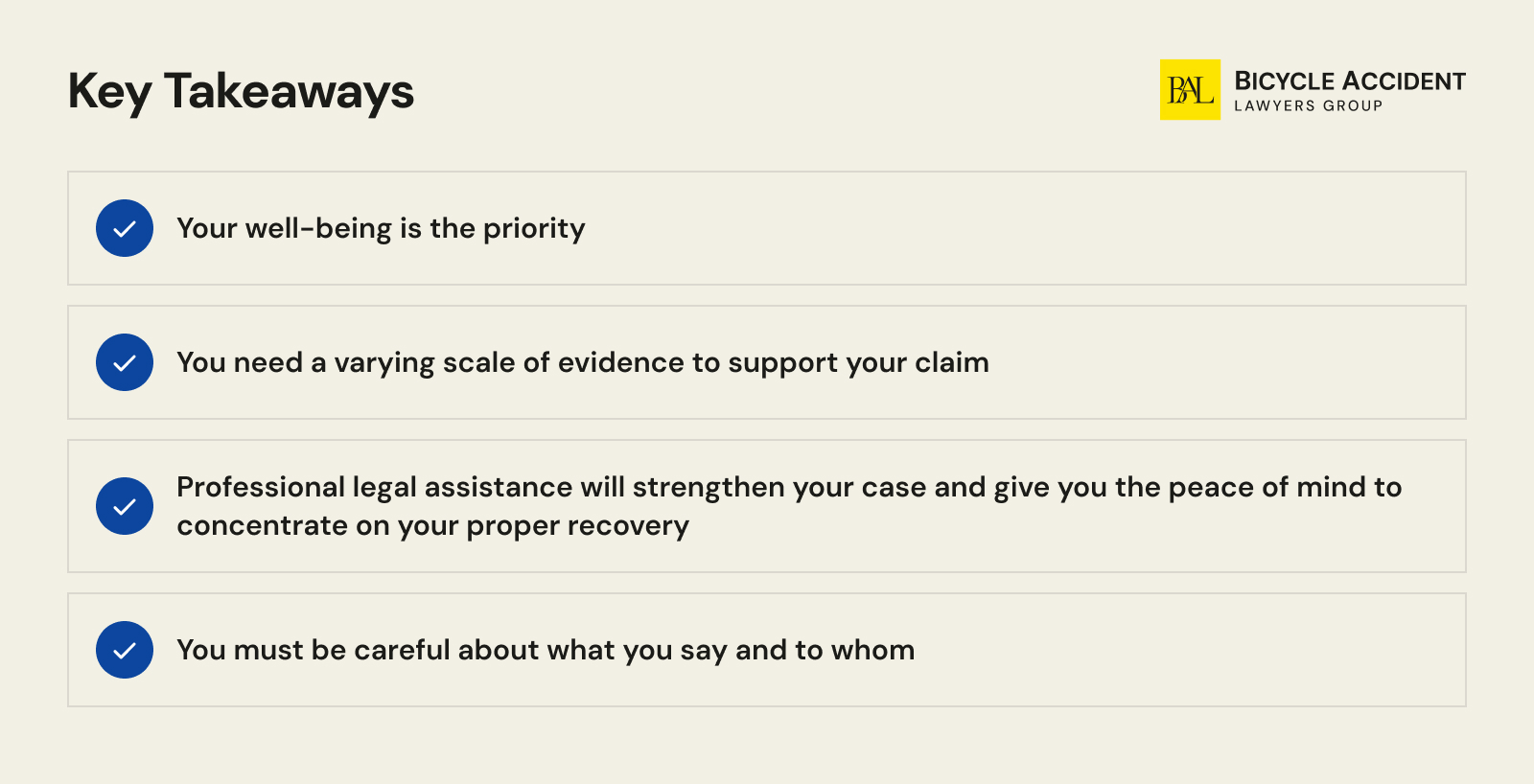
- Your well-being is the priority
- You need a varying scale of evidence to support your claim
- You must be careful about what you say and to whom
- Professional legal assistance will strengthen your case and give you the peace of mind to concentrate on your proper recovery
Vital Steps to Take After a Bicycle Accident
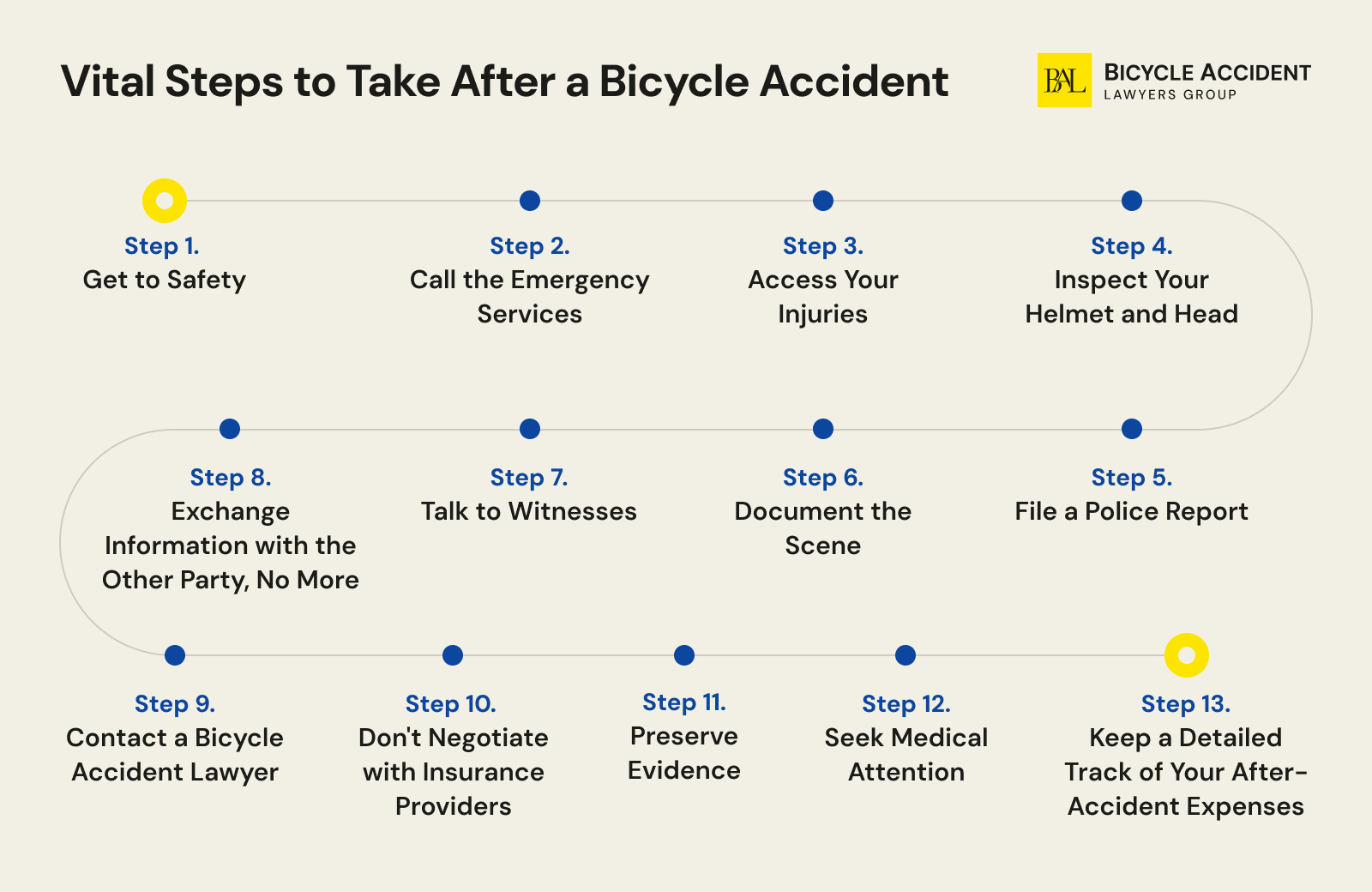
A stressful situation such as a bike accident may cloud your judgment and make you act irrationally. Because adrenaline can mask your traumas, you may underestimate the crash’s severity or take actions that will hurt your case. Whether you’ve collided with a motor vehicle or another bicyclist or fallen off your bike because of the road conditions, the more composed you remain and the wiser you act, the better.
In the following sections, our experts from the Bicycle Accident Lawyers Group will share some critical insights on what to do after a bicycle crash to manage the situation well.
Get to Safety
Your safety is the most important thing, given the circumstances. Inspect your injuries, and if you can move without assistance, you should get away from the road. In case the sustained traumas are severe, you should signal to people that you need help. Make sure that you are visible to prevent further harm.
Call the Emergency Services
Dial 911 as soon as you can. After you report the accident, emergency services, such as paramedics and the police, will be dispatched. Either service will provide necessary help along with official statements regarding your damages and the primary underlying conditions of the accident. You will need these reports as you proceed with the recovery claim.
Access Your Injuries
Even if you do not feel any pain right after the crash, you should inspect your body thoroughly for visual signs of trauma. It is imperative to seek treatment from a trained professional for severe traumas. However, some conditions have a delayed effect, and you mustn’t disregard the possibility.
Inspect Your Helmet and Head
A protective helmet usually absorbs some of the impact but does not eliminate serious head injuries. So, if you feel dizzy or disoriented, it is best to seek medical attention immediately. Various traumatic brain injuries, such as mild concussions, may only be detected by a trained field professional.
File a Police Report
You must remain at the scene of the accident and wait until law enforcement arrives if your condition does not require immediate treatment. Share the details of the bicycle crash with the police officers and inquire for a copy of their records.
Document the Scene
To build a solid case and recover maximum compensation for your injuries and losses, you must provide enough evidence to support the claim. Document the scene of the bike crash in detail. Pay increased attention to the following aspects:
- Visible injuries and damages
- Road quality and visibility
- Traffic signals and signs or absence thereof
- Weather conditions
- Location
- Times and date
- Other vehicle’s details
Be as meticulous as possible because you never know which details could make a difference.
Talk to Witnesses
If there are any eyewitnesses to the bicycle crash, you should interact with them and record their statements. The questions you may want to ask include but are not limited to the following:
- Did you see what happened clearly?
- Do you have any photos or videos of the accident?
- Can you recount the other party’s actions before the incident?
- Did you see or hear something unusual before the collisions?
- Can you share your contact details for the official statement?
- Would you be willing to testify if needed?
Make sure that you are not pressuring the witnesses into taking sides while recording their statements.
Exchange Information with the Other Party, No More
It is important to collect information such as the involved party’s full name, address, driver’s license number, and insurance information. However, that is about it. No further interaction is recommended. Even if the at-fault party initially admits their part in the bike crash, they may deny it later.
Moreover, politeness and words of apology can be used against you and treated as an admission of guilt or partial contribution to the bike accident. Try to remain calm and objective if you want to secure a fair settlement of your losses. One more thing — if the driver seems to be agitated or straight-up hostile, it is best not to engage with them at all.
Contact a Bicycle Accident Lawyer
A trained bicycle accident attorney is your best bet to obtain a rightful reimbursement after a bicycle crash. Experienced legal representatives know how to communicate with insurance companies. If the insurance company rejects your initial compensation request, they can gather the necessary evidence to strengthen the case and proceed to trial.
Don’t Negotiate with Insurance Providers
Every insurance agent acts in their company’s best interests. Although it may seem like a fair deal to accept available coverage right at the accident scene, the chances are that you’ll be presented with a lowball offer that does not reflect sustained damages in full.
Preserve Evidence
Your bicycle accident is as good as the evidence that supports it. Our legal advisors recommend that you keep the following objects after the collision:
- Broken bike: If you have to repair it, ask for a receipt that states repair costs in full.
- Ruined clothes: Clothes with obvious signs of injury — tears and blood on them, etc.
- Helmet: Don’t get rid of your protective helmet with cracks or dents in it.
- Personal items: If any of your valuable belongings were damaged, keep them, too, to prove the scale of your losses.
Seek Medical Attention
Even if your injuries seem minor, you can’t predict if there are any delayed effects unless you are a medic. Besides, when you seek prompt medical care right after the bike accident, it will be noted on your medical record, which serves as palpable evidence of your economic damages.
Keep a Detailed Track of Your After-Accident Expenses
The strength of your claim depends on the evidence you can share with an insurance company or jury if the case goes to trial. You may want to gather and keep the following documentation in order:
- Correspondence with the insurance provider.
- Provide proof of your lost wages and the days you spent off work because of the injury.
- Don’t dispose of any medical bills or other documents that prove your condition after the incident, as well as required treatments, prescriptions, and other relevant manipulations.
- Obtain a copy of the police report.
- Gather any other receipts that reflect your financial losses after the bike crash.
What Can a Cyclist Do to Prevent or Ease a Bike Accident?
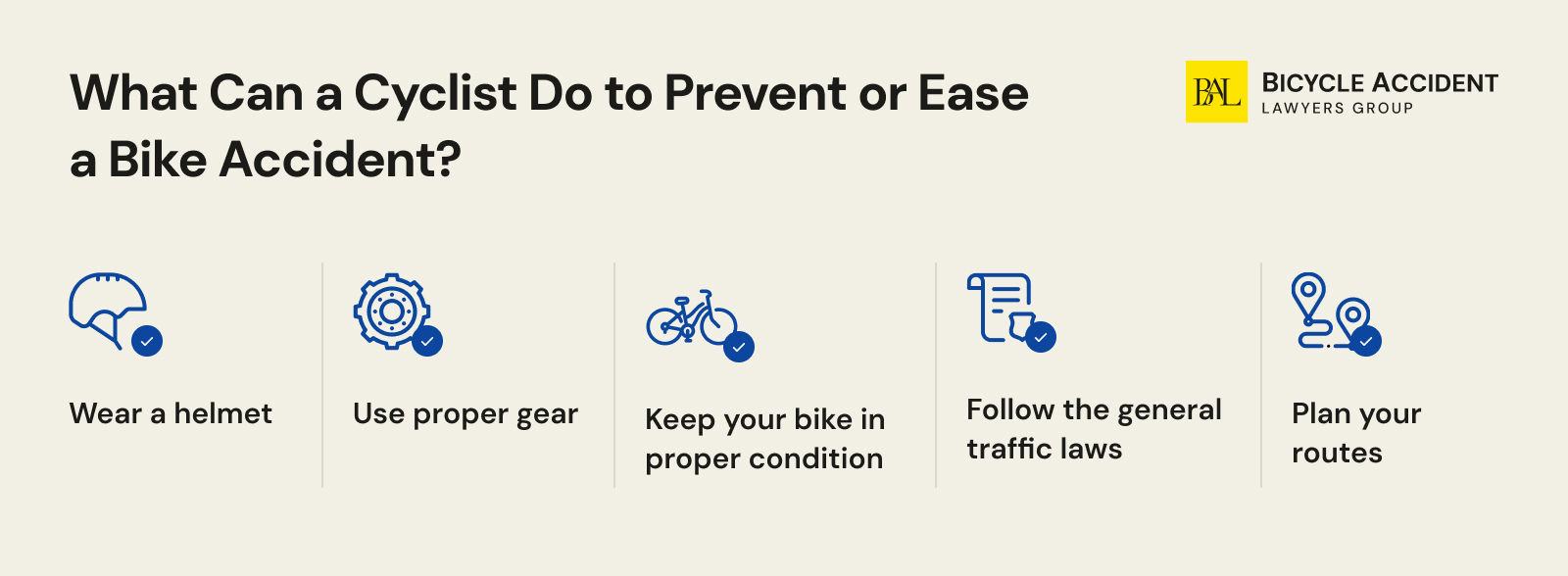
The recent survey proves that bicycle safety across the country dropped by almost 50% over the past 10 years. It means that you can’t eliminate the possibility of a bicycle accident while riding a bike. However, you can take a few steps to lessen the risk of suffering serious injuries. For example:
- Wear a helmet. Most states in the USA demand minors wear a protective helmet while on the road. The rule does not apply to adults. However, a helmet will lessen the impact of the crash. Even if you hit your head hard on the ground, you may not suffer a serious head injury as opposed to falling off your bicycle unprotected.
- Use proper gear. On top of wearing a helmet, you can use gloves and other protective gear to ensure better control of the vehicle, no matter the unexpectedness of the accident. Besides, proper body coverage will reduce your chances of getting a gnarly road rash.
- Keep your bike in proper condition. Don’t get out there on the busy streets without checking if your brakes are fully functional. The same applies to the state of the wheels and reflective equipment of the vehicle. You must remain visible on the road.
- Follow the general traffic laws. Cyclists are rightful road users in the majority of states. This means that you should follow all local traffic rules and regulations. Riding recklessly will put you at risk, not to mention that the chances of receiving fair compensation after contributing to the bicycle accident will be significantly reduced.
- Plan your routes. It may seem like a good idea to go where the wheels take you. However, if you plan your journey and check for proper bike lanes on the way, you may decrease your chances of getting injured.
Final Thoughts
No bicycle accident is a fun ride, despite how minor it seems. Moreover, no one can be fully prepared for it. However, if you manage to stay calm and act logically, you will enhance your safety, speed up your recovery, and ensure expert legal protection.
After you’ve eliminated any threat to your health and well-being, contact a professional bicycle crash lawyer and let them take over from there. A well-versed injury attorney from Bicycle Accident Lawyers Group will give you peace of mind and negotiate the maximum settlement you deserve without any advance payments! All it takes is a free consultation to set justice in motion!



